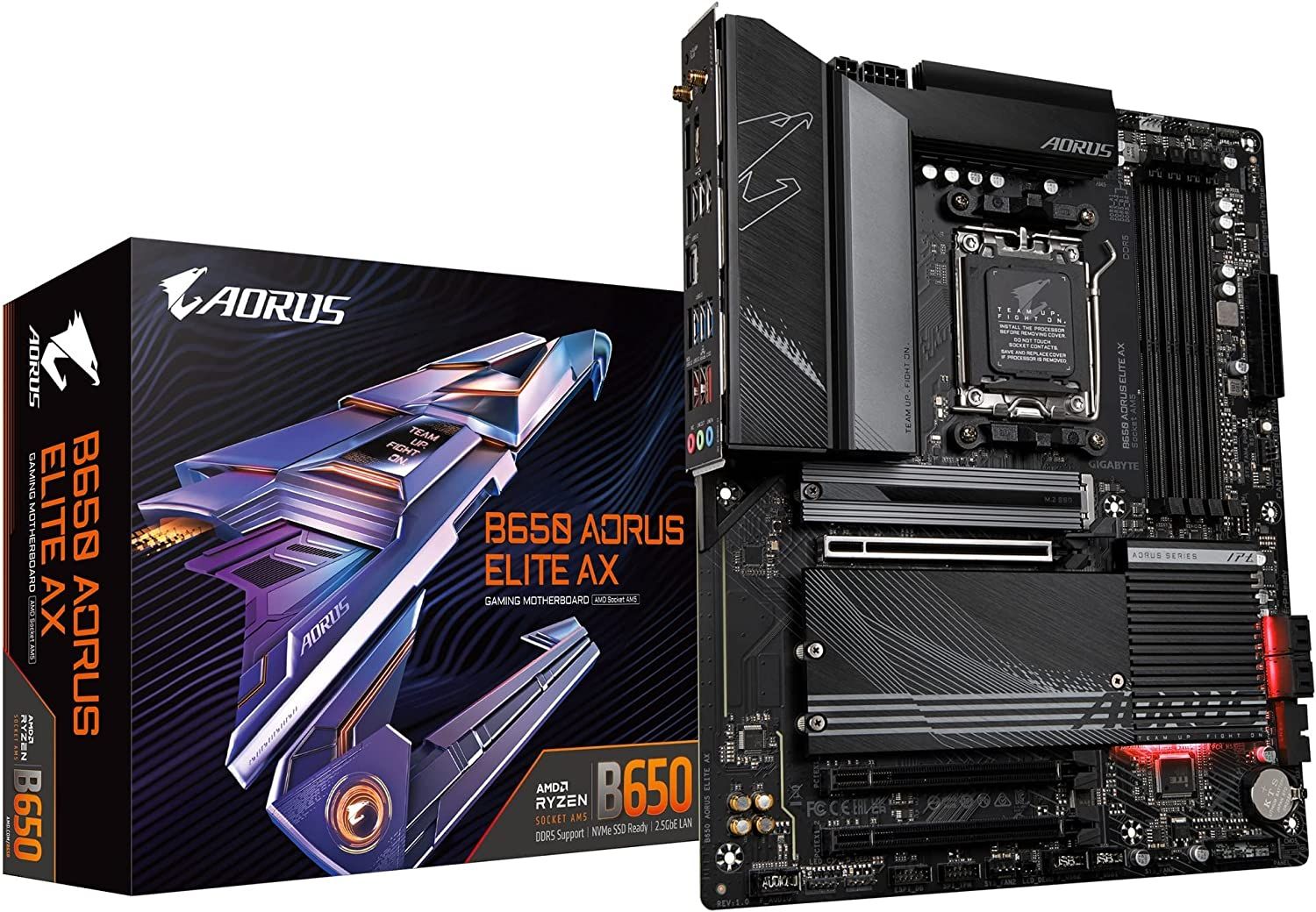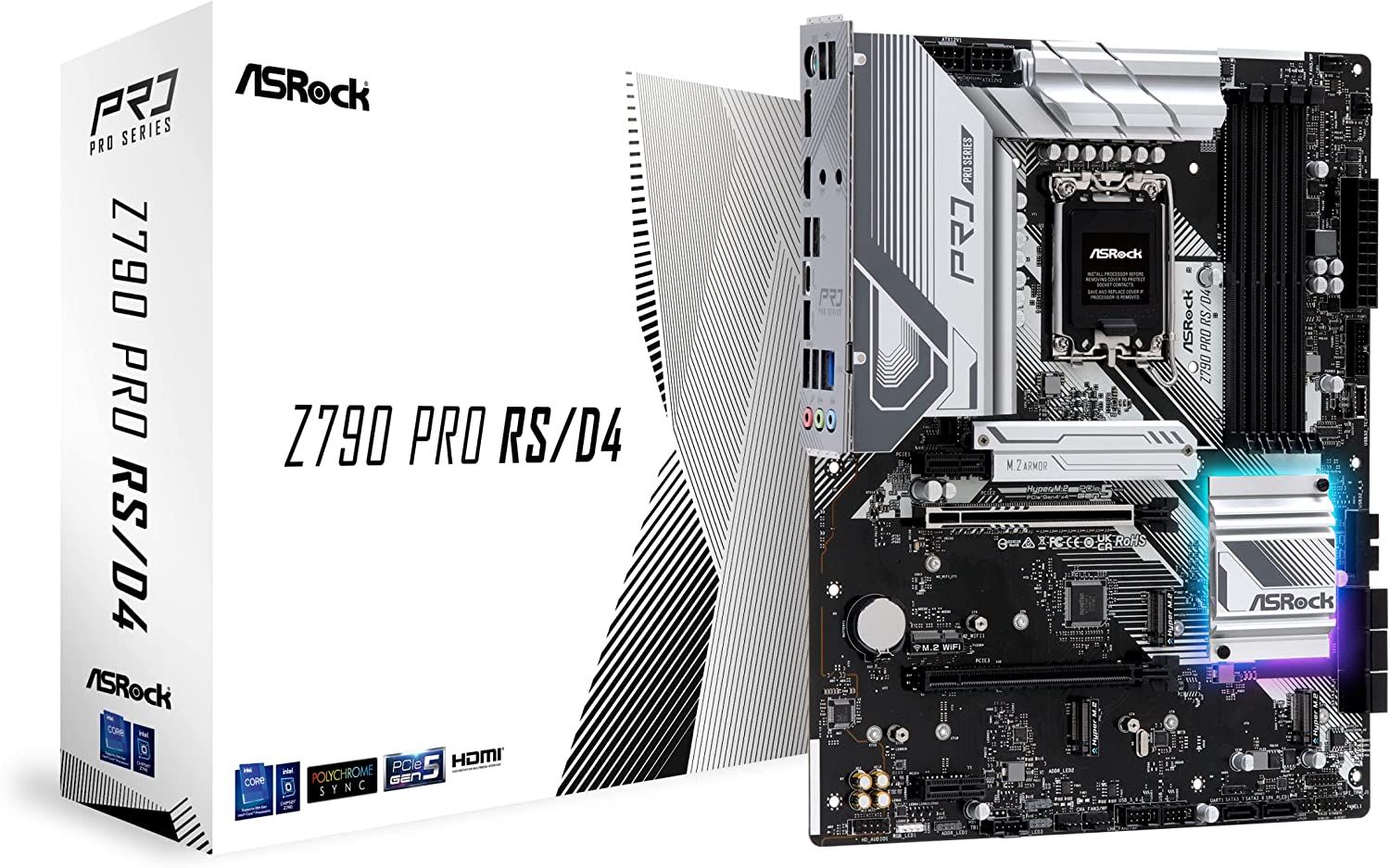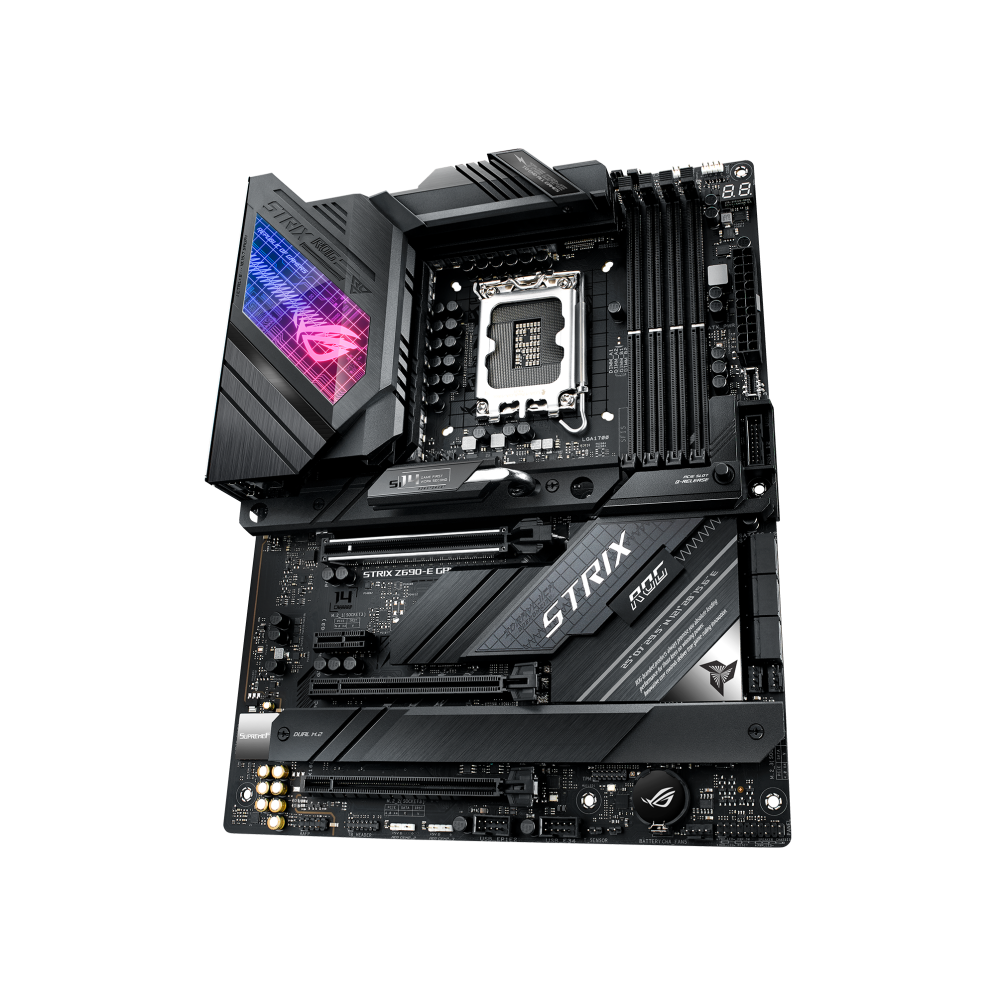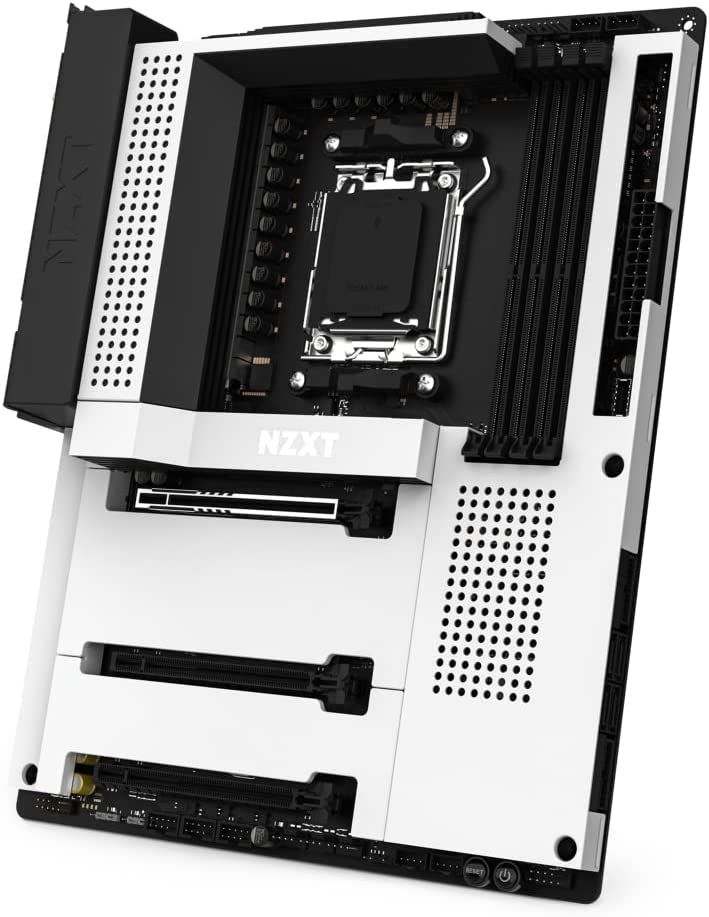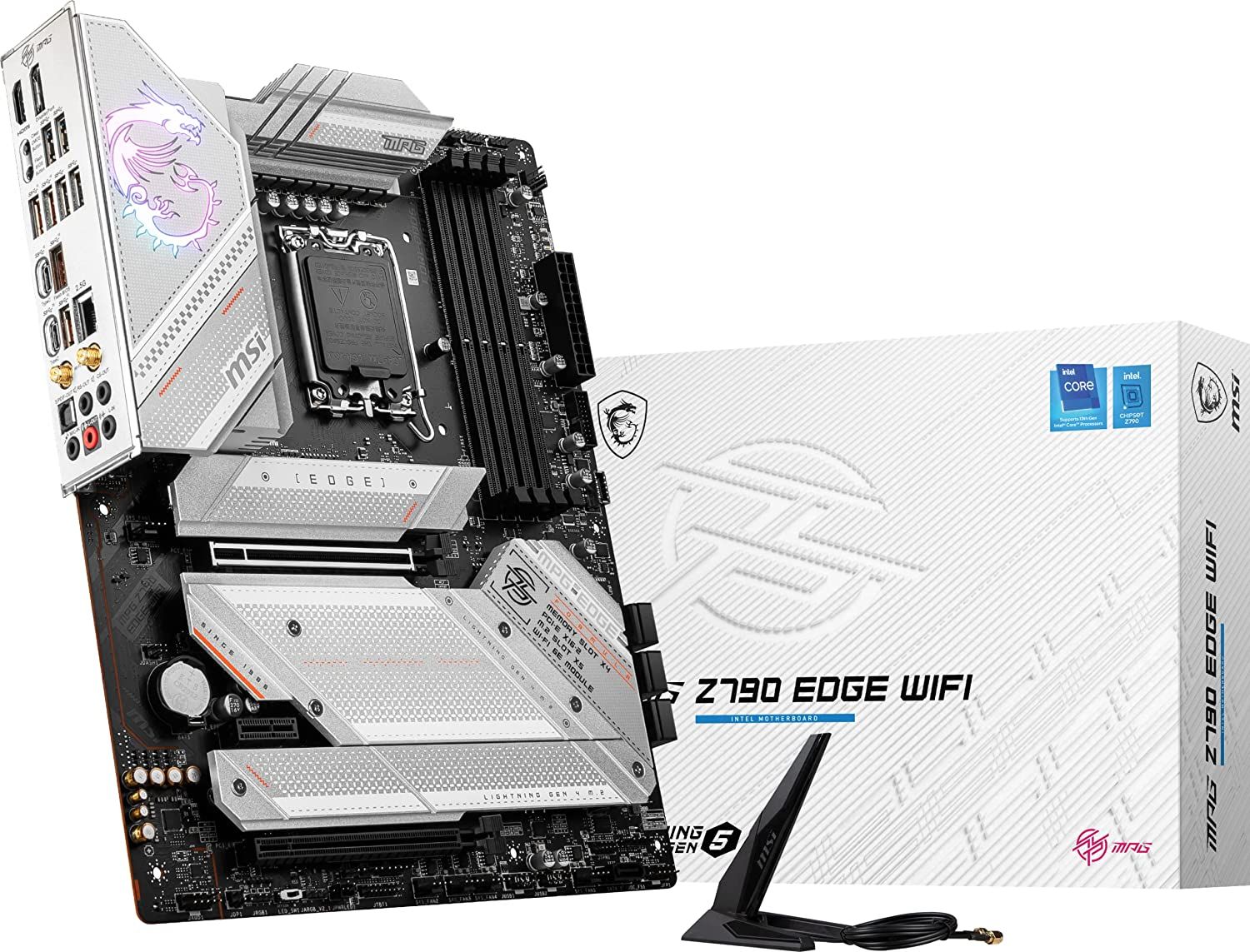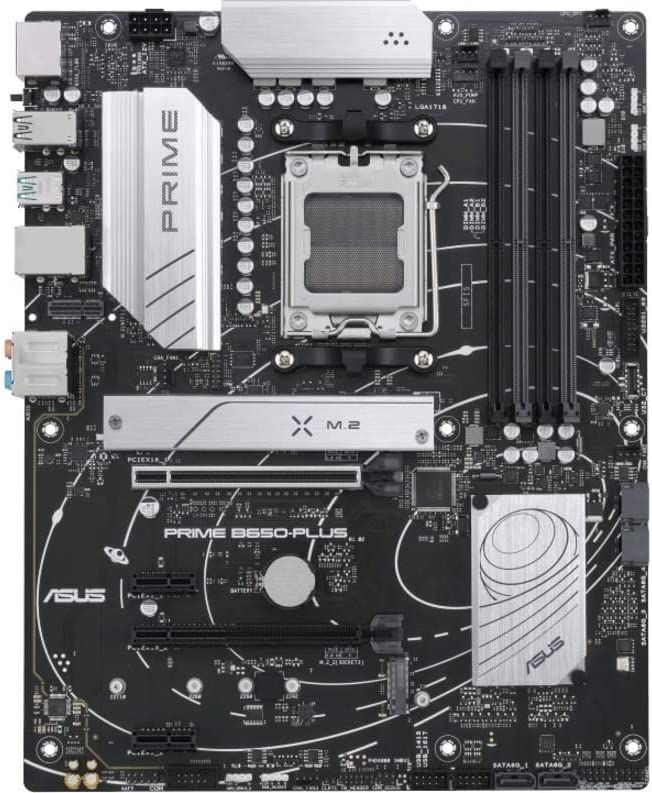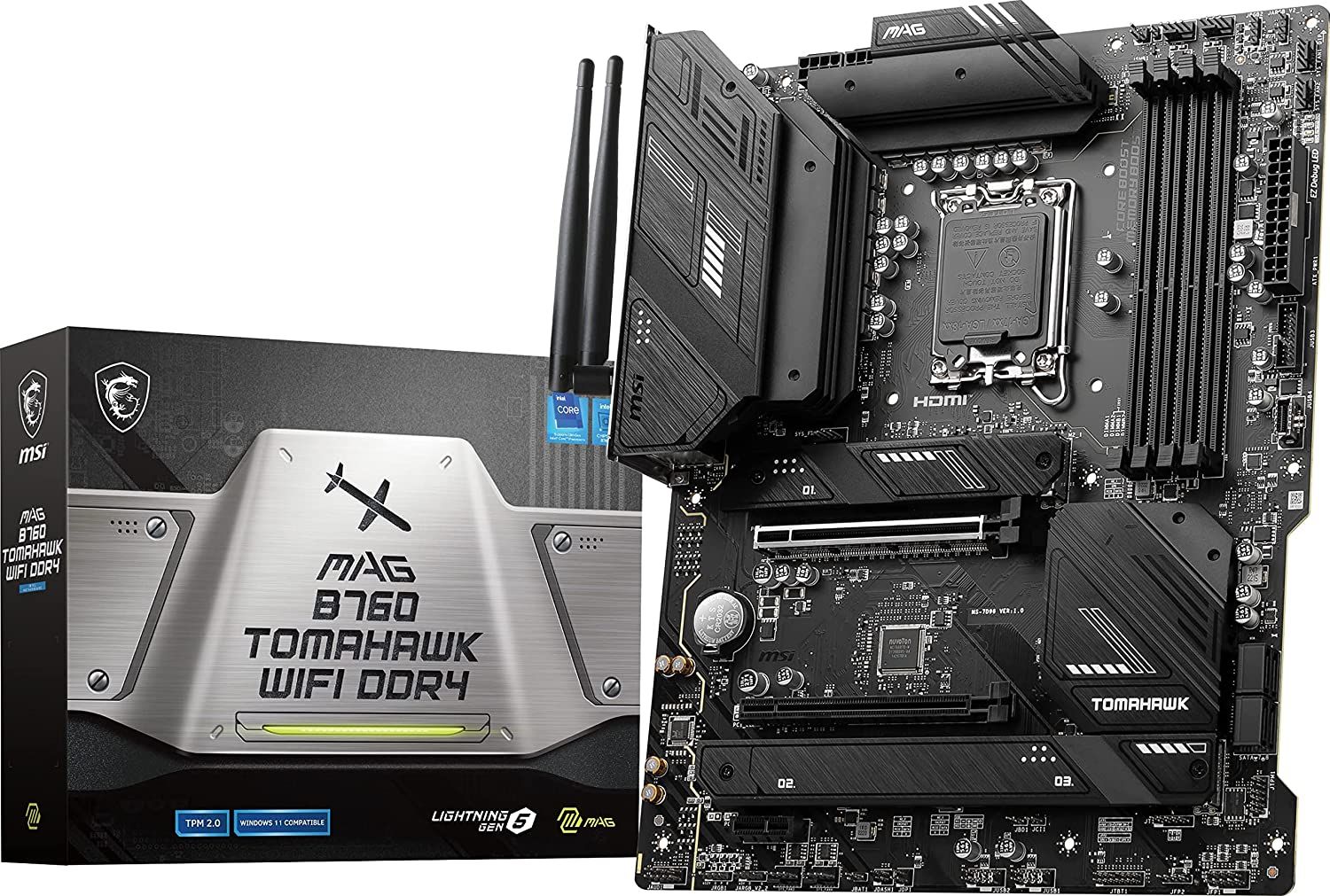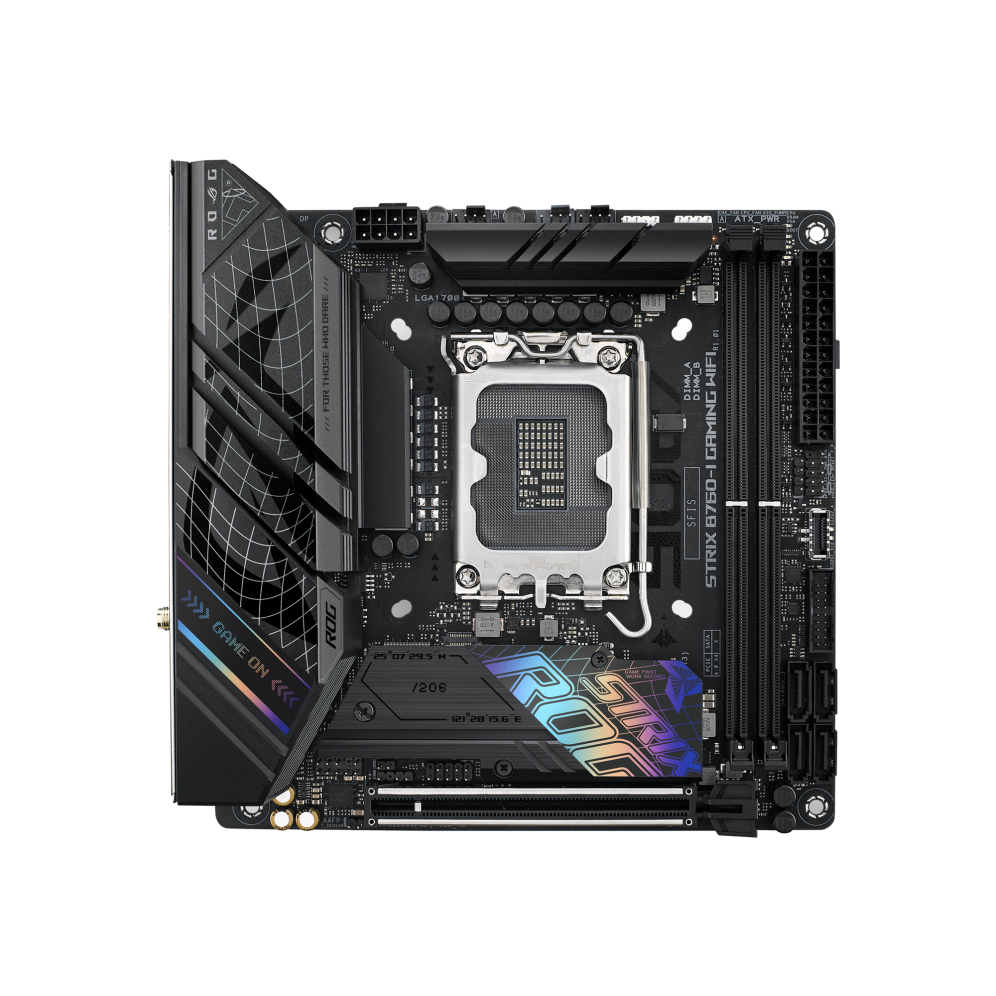Modern gaming PCs of late are more than just capable computers built around a powerful GPU, with other factors including the CPU, memory, and storage playing increasingly important roles in enabling gaming experiences for end users. The most overlooked part that allows all of these to work together in cohesion without causing issues or bottlenecks is perhaps the motherboard with system builders often compromising when it comes to this to get higher-end components.
Motherboards are an important thing to get right as newer technologies such as PCI-E 5.0, higher-clocked DDR5 memory, and better networking standards kick in. As more demanding CPUs require higher-end VRMs, as well as capable I/O to maximize their capabilities, motherboards have morphed over time from a simple PC component that connects internals, to one that handles quite a few key tasks while ensuring compatibility with the latest and greatest in terms of hardware.
This is particularly true for AMD's motherboards, which are often required to be a bit more future-proof to ensure they can upgrade with ease. Intel's recent 12th and 13th-generation CPUs both work on the same socket and the newly released 14th-generation motherboards follow suit, ensuring gamers looking for Intel's LGA 1700 socket platform offerings have plenty of hardware choices available to them in 2024.

Best AMD Motherboards For Gaming In 2024
Here are our picks for the best AMD AM5-based motherboards for gaming that players can buy right now!
Factors to Consider When Shopping for the Best Budget Motherboards for Gaming
- Processor and Memory Support: The processor and memory determine how powerful a gaming desktop is. Therefore, users must consider the type of CPU and memory sockets included on a gaming motherboard. They should have a motherboard with an LGA 1700 socket for Intel 14th-generation processors and DDR5 memory slots.
- Upgrade Potential: A good gaming motherboard should have extra PCIe spots for future upgrading. It should be easier for users to install additional hardware to make a more formidable gaming computer. Plus, it should have other power terminals for connecting the extra hardware.
- Compatibility: Gamers should ensure that the motherboard they select is compatible with the processor and memory of the computer. For instance, most Intel processors are compatible with an LGA 1700 socket. For modern AMD processors, an AM5 socket might do the job.
- Chipset: This is what determines the capabilities and features of the motherboard. For users interested in budget gaming, the B760 chipset will be a good idea for an Intel CPU, while for AMD processors, AM5 will be the best bet. Unlike AMD, Intel's last-gen motherboards support most of the latest features, like DDR5 and PCIe 5.0. Considering the B760 chipset does not support CPU overclocking, gamers can consider a previous-gen Z690 motherboard to build a high-end, no-compromise rig without breaking the bank.
- Form Factor: A motherboard’s form factor determines its compatibility and size with the PC case. However, the most popular ones include Mini-ITX, Micro-ATX, and ATX.
- Expansion Slot: For a gamer who plans to utilize several graphic cards, a mobo with several PCIe slots will be a good option.
Need more budget video gaming gear? Consider acquiring a great budget 4K monitor to enhance gameplay!
Game ZXC's Picks for the Best Budget Motherboards for Gamers in 2024
The GIGABYTE B650 AORUS Elite AX offers the full ATX treatment to AMD's entry-level B650 chipset while throwing in plenty of storage options, a capable power delivery mechanism, and high memory overclocking potential in a neat package that can be had for just under $200. It also offers a complete networking stack out of the box with 2.5G Ethernet, Wi-Fi 6E, and Bluetooth 5.3 out of the box, a combination that is normally found on pricier, higher-end motherboards. It uses its limited PCI-E 5.0 lanes on offer to power a single M2 PCI-E 5.0 slot for next-generation storage needs.
At the same time, it skips on a PCI-E 5.0 x16 slot, somewhat hurting its future-proofing prospects. While modern GPUs tend to be limited to PCI-E 4.0 speeds, it is expected that the coming generations will take advantage of the new PCI-E 5.0 spec and may require a motherboard upgrade to allow users to fully benefit from the added bandwidth.
That being said, the GIGABYTE B650 AORUS Elite AX has a lot going for it as an entry-level motherboard. It has a solid set of VRMs, excellent connectivity and I/O, and plenty of flexibility in terms of memory overclock potential. All of these factors combine to make it one of the best motherboards in the business in 2024. This, coupled with better pricing makes it an excellent gaming motherboard to recommend on a budget if one is building a gaming PC in the near future.
The ASRock Z790 Pro RS/D4 ATX LGA1700 Motherboard is an excellent ATX-based, gaming-centric motherboard that promises a value approach to the high-end Intel Z790 chipset while offering features that are normally found in more premium motherboards. With 2.5G Ethernet on offer in addition to 4 M2 slots for users looking to add storage or a Wi-Fi key as part of their upgrades.
It happens to be one of the cheapest Z790-based motherboards currently available, supporting both Intel's 12th and 13th-generation CPUs alongside PCI-E 5.0 GPUs as a future-proof measure. It does, however, skip on PCI-E 5.0 storage support currently, and does not come with an add-in card to enable it. The choice of DDR4 memory makes it a relatively cheap upgrade compared to some DDR5 motherboards for gamers looking for an update that allows them to use their existing last-generation memory.
At the same time, not all gamers will be enthusiastic about going with a 13th-generation Intel motherboard in a DDR4 configuration. Those looking to build a new PC from scratch would be better off buying the DDR5 version that clocks in at the same price tag. As DDR5 memory continues to tumble in pricing, the costs are more frequently closing in on DDR4 offerings.
Note: With a BIOS update on offer that enables support for Intel's 14th generation CPU lineup available for download, users might want to reconsider if they are not upgrading from an older LGA 1700-based CPU given that Asrock has chosen to eliminate the BIOS flashback button and utility that allows users to update the BIOS on its Z790 motherboard options.
This essentially means users looking to pair this with a 14th-generation CPU might need to find a compatible CPU (12th or 13th-generation) for older iterations of the same motherboard to avoid compatibility issues with detecting a newer processor than the BIOS version itself.
Based on the previous generation Z690 chipset, the ASUS ROG Strix Z690-E Gaming Wi-Fi offers tremendous value for gamers looking to build a killer, no-compromise gaming PC without breaking the bank. It offers more or less the same features as the current Z790 motherboards but without the premium pricing. Unlike the budget-friendly B760 platform, this motherboard supports proper CPU overclocking, allowing gamers to maximize performance from the latest Intel chips.
The ROG Strix Z690-E Gaming Wi-Fi is compatible with the latest 13th and 14th Gen CPUs via a BIOS update. It can handle flagship processors like the 14900K and 13900K thanks to its capable 18-phase, 90A V-core VRM and beefy heatsinks. It also comes fully loaded with DDR5 and PCIe 5.0 support, so gamers throw in the best gaming GPUs and fastest RAM kits to round out a truly high-end gaming machine.
Design wise, ASUS retained the classic black-themed design with onboard RGB lighting and plenty of RGB headers for extra personalization. It ticks all the right boxes for connectivity, with 12 USB ports in the rear I/O, Wi-Fi 6E and 2.5G Ethernet, and five M.2 slots, including a future-proof PCIe 5.0-enabled slot. In addition, the user-friendly BIOS, 7-segment display, and BIOS FlashBack button make it easy to overclock and troubleshoot when things go wrong. For a little over $200, the ROG Strix Z690-E Gaming Wi-Fi is a perfect option for a budget-friendly but powerful gaming PC.
The NZXT N7 B650E is one of the best-looking and feature-packed AM5-based motherboards a gamer can grab, even as it trades at a somewhat high price tag for a B650E-based motherboard. It comes with excellent power delivery allowing it to run AMD's highest-end 7950X/7950X3D CPUs with ease. It couples this with PCI-E 5.0 readiness for both the GPU slot and a single M2 socket while offering support for a total of 3 NVME drives.
It delivers excellent networking, offering 2.5G Ethernet, Wi-Fi 6E, and Bluetooth 5.2 out of the box. While it does cost considerably more than most B650E motherboards, it offers tight integration with NZXT's CAM software, plenty of RGB, and fan headers. This allows it to be a very versatile offering that can handle pretty much any gaming PC's requirements with considerable future-proofing available under the hood. Its aesthetics do set it apart as a more premium, albeit budget-oriented option for an AMD gaming motherboard in 2023 with some of its (higher-end) competition edging past the $600 mark with ease.
The NZXT N7 B650E continues to deliver the goods as one of the most popular gaming motherboards on offer while also offering slightly better value with a sub-10% price cut over its previous market price, making for an excellent value-added option for gamers looking for a more premium option currently.
The MSI MPG Z790 Edge WiFi Gaming Motherboard is a premium, but somewhat mid-range Z790 motherboard on offer that throws in better overclocking support than its peers thanks to its 16-1-1 phase VRMs. It doubles down with aggressive cooling to keep temperatures down on the main board while offering a PCI-E Gen 5 x16 GPU slot and support for up to 7200MHz memory out of the box.

The Best Gaming Motherboards in 2024
Not all motherboards are created equal. The team at Game ZXC takes a closer look at some of the best gaming motherboards available right now.
It comes with a full networking stack on offer with 2.5G Ethernet, Wi-Fi 6E, and BT 5.3 out of the box and offers looks that match with more premium-tier gaming motherboards with ease. Much like other Z790-based motherboards, however, it does not offer PCI-E 5.0 NVME slots or an adapter that makes use of the Gen 5 x16 slot to leverage faster storage, instead opting for a more future-proofed GPU slot.
For users intending to use Intel's 14th generation CPUs, an updated model of the same, the MSI MPG Z790 Edge TI MAX WiFi is also available, shipping with a Rocket Lake Refresh-ready BIOS, Wi-Fi 7 support, and better-overclocked memory support in tow.
The Asus PRIME B650-PLUS ATX AM5 Motherboard is an entry-level AM5 motherboard that offers an acceptable, but utilitarian feature and upgrade set to gamers and end users looking to build a simple, gaming-centric PC without too many bells and whistles. It does offer 2.5G Ethernet and a PCI-E 5.0 NVME slot out of the box, as well as support for high-clocked DDR5 memory.
However, it compromises on its feature set considerably. Thanks to the B650 chipset, a somewhat underwhelming VRM set with limited cooling on offer, this motherboard limits itself to PCI-E 4.0 speeds for the GPU and sacrifices Wi-Fi to cut in terms of pricing. This also means that some of its competition brings better features at a similar price point for users looking for a better package and not being particular about the ASUS brand name in the sub-$ $200 price range.
For users who must have a budget AM5-based AMD motherboard with Wi-Fi, the ASUS TUF Gaming B650-Plus Wi-Fi is an excellent alternative that currently trades at a small discount bringing it to just $10 above the Prime B650-Plus motherboard.
The MSI MAG B760 Tomahawk WiFi DDR4 is an excellent motherboard that supports both Intel's 12th and 13th-generation CPUs as well as support for the newer 14th-generation Raptor Lake Refresh CPUs (with a BIOS upgrade). With high memory overclocking potential and great networking on offer (Wi-Fi 6E, BT 5.3, and 2.5G Ethernet), it offers exceptional value versus its competition.
While it does offer PCI-E 5.0 at x16 to the GPU slot, making for an easier upgrade down the line, it does not extend the same when it comes to its M2 SSD slots, all 3 of which sport PCI-E 4.0 instead with users potentially finding issues with its DDR4 RAM limitations.
The MAG B76t0 Tomahawk Wi-Fi assuages most of these concerns simply by the sheer amount of value it delivers under $200 while throwing in a significant amount of USB connectivity, making it a great upgrade-friendly motherboard for gamers despite its compromises in some areas.
Note: Early iterations of this motherboard do NOT support Intel's 14th-generation CPUs out of the box and would require an older CPU equipped to update the BIOS before the motherboard detects the newer Intel processors which could become an issue for some DIY builders without access to an Intel 12th or 13th generation CPU.
Alternatively, users planning to use Intel's higher-end Intel Core 14th-generation CPUs can also benefit from considering the ready-to-go MSI Z790 Tomahawk Max Wi-Fi instead which offers support for the newer CPUs, better power delivery, and Wi-Fi 7 support out of the box.
For gamers looking to downsize their gaming rig or build a small form-factor PC on a budget, the ASUS ROG Strix B760-I Gaming WIFI is a standout option that packs a serious punch in a compact package. While not the cheapest mini-ITX motherboard, it provides a few key upgrades that make it worth the slight premium. In addition, the B760 chipset offers the sweet spot for mid-range Intel CPUs.
The VRM design on the ROG Strix B760-I Gaming WIFI isn't overkill, but it's enough to handle most Intel CPUs comfortably, especially since CPU overclocking is out of the question. Elsewhere, ASUS did not skimp on features. The motherboard boasts solid support for DDR5 memory up to 7600MT/s, two M.2 Gen 4 storage slots for quick game launches, and a PCIe 5.0 expansion slot that can handle high-end GPUs like the RTX 4080.
While the onboard heatsinks do a great job on their own, gamers still need to pair this motherboard with an excellent CPU cooler, preferably an AIO cooler or a custom liquid cooling loop, and an ITX case with good airflow to maintain respectable thermals. The only real downside is that the rear I/O panel isn't the most extensive, but gamers still have access to eight USB ports, including two USB-C ports, which are enough to plug most gaming accessories.
Any gamers not shopping on a budget should also check out Game ZXC's list of the best motherboards available now!
How To: Picking A Budget Gaming Motherboard
Picking the right gaming motherboard on a budget is harder than simply rolling the dice with the cheapest option one can find online. This is because of how crucial a motherboard can be when it comes to the performance, stability, and longevity of any particular gaming PC. Some of the key things one should be looking out for are:
Memory Support
While users on a current-generation AMD platform have only DDR5 support in play for socket AM5, Intel offers both DDR4 and DDR5 motherboards. While the latter is faster, it also tends to cost slightly more than its DDR4 alternatives and also results in slightly higher RAM costs even if they have shrunk greatly in the last few months. An informed user therefore tends to benefit from a higher-end motherboard that has better memory compatibility and benefits from higher clocked memory by allowing for a stable overclock in multiple configurations.
Upgrade potential
Picking a motherboard with a budget chipset or a dated PCI-E slot can limit upgrade potential for some gamers down the line. Choosing a gaming motherboard that can essentially deliver the goods on both current performance and potential upgrades down the line is important for gamers that look to build and upgrade their gaming PC over time. An example would be how AMD's more budget A and B 300 series chipsets on AM4 were limited in terms of the total number of Ryzen-based processors they could support throughout the lifetime of the socket itself.
Connectivity Offerings
Most budget motherboards tend to use older, more limited ethernet connectors and skip Wi-Fi and Bluetooth connectivity options altogether, something that can be a rude awakening for gamers switching from a prebuilt gaming PC or a laptop where these are often taken for granted. Doing one's research allows gamers to pick an option that supports both the connectivity options needed and the bandwidth class required for certain connectivity options.
I/O Offerings
Many gamers are also power users who require plenty of USB ports, dedicated audio ports, and more to truly unlock the potential of their gaming rigs. While higher-end motherboards generally have plenty of these, budget options tend to skimp or limit on USB ports, M2 slots, SATA ports and in some cases, even PCI-E slots which can be of an older specification irrespective of chipset and CPU-level support under the hood. It therefore pays off the investment of reading the fine print when picking a gaming-centric motherboard for your new PC.
FAQ
Q: Will Intel's 14th-generation CPUs work on older motherboards?
Intel's 14th-generation CPUs use the same LGA 1700 bracket that the 12th and 13th-generation CPUs employ. As a result, most Intel-based 6XX and 7XX series motherboards should be able to support the newer upcoming CPUs provided they get a BIOS update to detect the new processors
Q: Does a budget gaming motherboard have Wi-Fi?
While budget gaming motherboards historically tend to cut down on costs, most budget options on offer currently do have Wi-Fi built in. This is due to cheaper modules and consumer demand leading to it become a lower-end staple requirement, even as motherboards have significantly increased in price (and therefore the definition of budget simultaneously).




